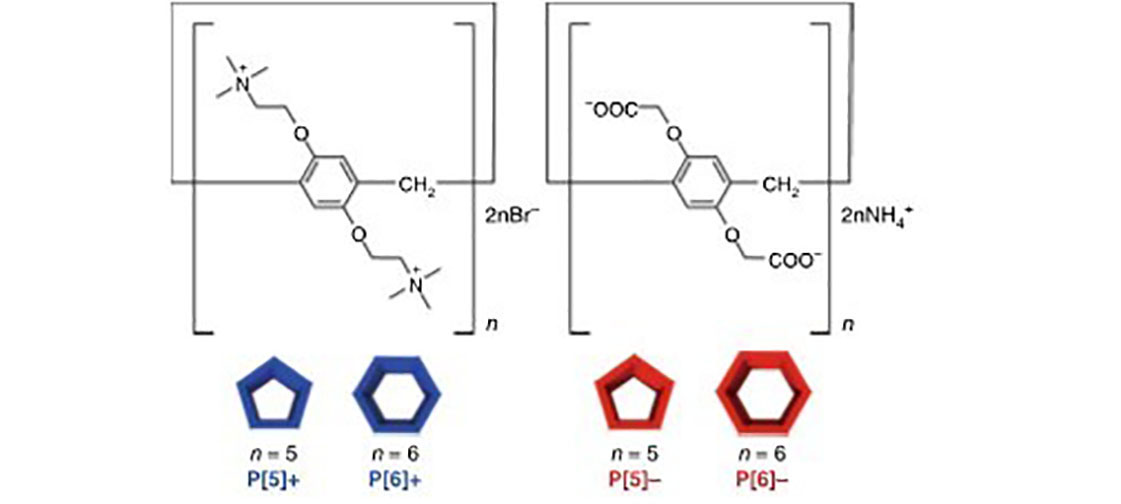Researchers at Kanazawa University report in Communications Chemistry that certain pentagonal and hexagonal organic molecules exhibit self-sorting.
The effect can be used to grow multilayered tubular structures that preserve the geometry of the initial cavities.
Supramolecular assemblies are nanostructures resulting from molecules binding together, through intermolecular interactions, into larger units. One approach for controlling supramolecular assembly involves self-sorting: molecules recognising copies of themselves, and binding with them. Now, the findings of an interdisciplinary collaboration between the Supramolecular group (Tomoki Ogoshi and coworkers) Atomic Force Microscopy (AFM) group (Hitoshi Asakawa, Takeshi Fukuma, and coworkers) of the Nano Life Science Institute (WPI-NanoLSI) Kanazawa University showed that self-sorting behavior can arise from the principle of geometrical complementarity by shape: in a mixture of specific pentagonal and hexagonal molecular building blocks, pentagons bind to pentagons and hexagons to hexagons, and no mixing occurs.
Asakawa and members of the AFM group conducted experiments with molecules called pillar[n]arenes, with n = 5 and n = 6, corresponding to pentagonal and hexagonal shapes, respectively. Both molecules come in two ‘flavors’: positively (cationic) or negatively charged (anionic). The polygonal molecules are essentially rings of 5 or 6 identical organic units, each featuring a benzene ring, but the composition of the units is different for the cationic and the anionic variants.
Ogoshi and his colleagues of the Supramolecular group let cationic pillar[5]arenes (P[5]+ in shorthand notation) adsorb on a quartz substrate. From this structure, they were able to grow P[5]+/P[5]–/P[5]+/… multilayers by immersing it alternatingly in anionic and cationic pillar[5]arene solutions. The addition of a layer was verified each time by ultraviolet-visible spectroscopy measurements. The resulting overall structure is a ‘nanomat’ of tubular structures with pentagonal pores. Similar results were obtained for the pillar[6]arenes: stacks of alternating cationic and anionic layers of the hexagonal molecules could be easily fabricated. The arrangement of pillar[n]arenes on a surface was investigated by collaboration with Prof. Takanori Fukushima, Prof. Tomofumi Tada and co-workers from Tokyo Institute of Technology.
What the scientists found surprising was that it was not possible to stack pentagonal and hexagonal building blocks when trying to build an anionic layer on a cationic one (and vice versa). This is a manifestation of self-sorting: only like polygons can self-assemble, even if ionic interactions drive the formation of cation–anion layered structures.
The researchers also examined the structure of the first layer of P[5]+ or P[6]+ molecules on the quartz substrate. For the hexagonal molecules, the two-dimensional packing structure did no exhibit long-range structural order, whereas for the pentagonal molecules, it did. This is partly attributed to a lower density for the latter. For the multilayer ‘nanomats’, the same trend was observed: long-range order for the pentagonal stacks. The ring shape-dependent packing structures were simulated by a Monte Carlo simulation by collaboration with Prof. Tomonori Dotera from Kindai University.
The self-sorting effect discovered by Ogoshi and colleagues has promising potential applications. Quoting the scientists: “The ultimate challenge will be to propagate cavity-shape information on the surface to provide shape-recognisable adsorption and adhesive materials.”




